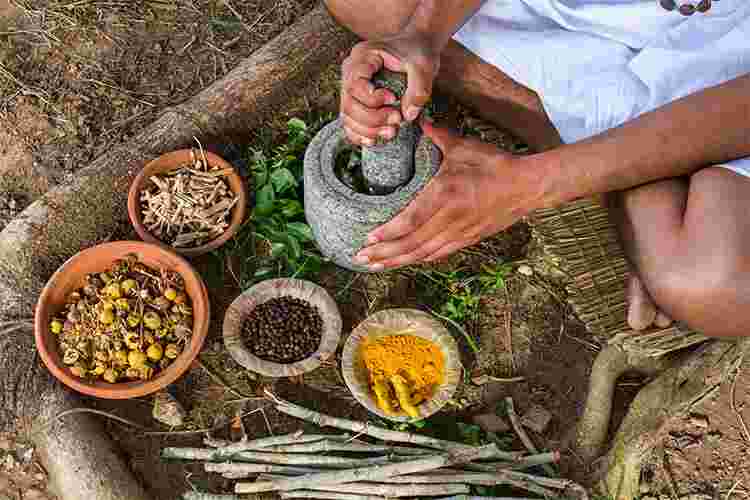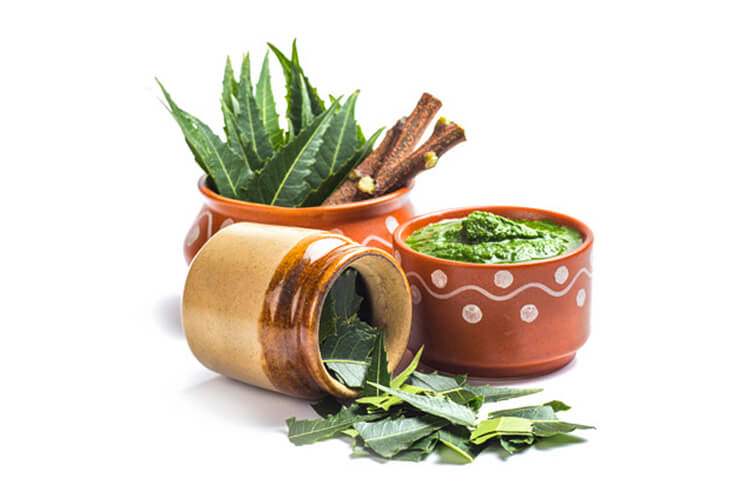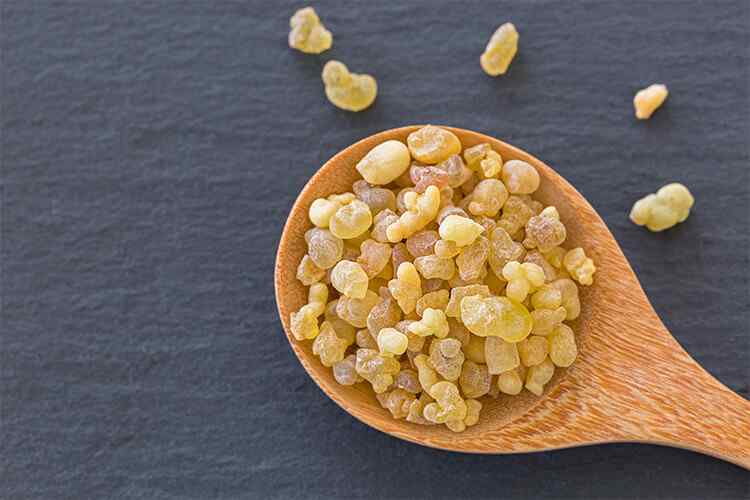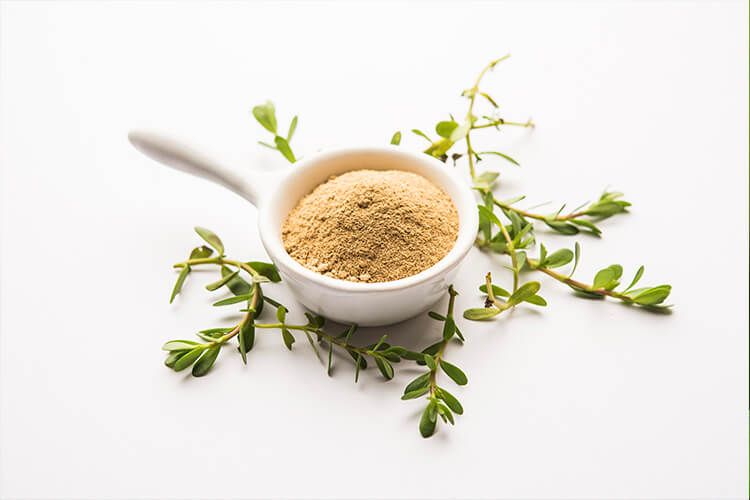Ayurveda: The Ancient System of Medicine
What is Ayurveda?
Ayurveda simply means the “science or knowledge of life”.
It is an old system of medicine that originated in India more than 5000 years ago. The roots are found in the Vedic culture.
The tradition is carried on by its masters and disciples alike for thousands of years. Also, there are many natural systems of medicine used today in western and eastern cultures with their roots in Ayurveda.

Table of Content
History of Ayurveda
It is said that Ayurveda is an eternal science and has existed even before the creation of the universe. It is believed that the Ayurveda resided in the creator himself, Brahma.
The origins of Ayurveda goes back to 3300 to 1300 BC, where the bronze age arrived in the Indus valley. Many plants and foods that we associate today with Ayurveda were cultivated here. The center of civilization later moved to the Ganges and coincided with the creation of Vedas in 500 to 1000 BC. Many elements of Ayurveda can be found described in the Vedas. Ashtanga Hridaya, Bhavprakash and Bhaisajya Ratnavali, Charak Samhita, Kashyap Samhita, Madhav Nidan, Sharangdhar Samhita, and Susrut Samhita are some of the classic texts or ‘Ayurveda Books’.
Ayurveda got away from superstitions and got a clearer frame, especially after Charak Samhita and Sushrut Samhita. During the invasions of Genghis Khan and even Mughals, Ayurveda remained prominent, as the medicine of choice.
Once the East India Company arrived in India, scholars from the western world were introduced to Ayurveda and plant-based medicines. However, many texts and techniques were lost to western influences during these years. It got a revival after the independence and since then continues to flourish.
In India, National Ayurveda Day is observed on Dhanvantari Jayanti. Dhanvantari is believed to be the physician of the Gods and also represents spiritual healing.

Types of Principle Energies in Ayurveda (Dosha in Ayurveda)
Vata, Pitta, and Kapha
But what are Vata, Pitta, and Kapha? We will shortly figure it out. Ayurveda is all about balancing body, mind, and soul. The balance comes from these elements of Ayurveda. They are called Dosha and because there are three of them, they are often called ‘Tridosha’.
What is Vata?
Symbolized as the gust of wind, Vata is believed to be made of space and air. It is connected to the movement and the energy of the body. The movement of the muscle, the pulsing of the heart, even the movements at the cellular level is attributed to Vata.
Someone who has a prominent vata energy will be a possessor of the quick and sharp mind and creativity. Since Vata is related to movement, they also exhibit a good amount of flexibility. They can be restless, overly active, and bold. Vata, when unbalanced, can create fear and anxiety.
Sugar and alcohol are most likely to derange the people with prominent vata. Exposure to cold can also cause them some disturbances. They are often suggested to go to sleep early and avoid moist, oily, and heavy foods. In Ayurveda, it is suggested that warm baths and steams help people with vata. Massage or bath before sleeping is also recommended.
If you need any support with your mood swings, our wellness counsellors can help you.
What is Pitta?
Pitta is related to fire and water. The energies related to metabolism and digestion correlates to Pitta. This in turn makes Pitta the governing energy for absorption, nutrition, and even body temperature. It is also related to some of the negative energies like anger and jealousy, when unbalanced.
People with Pitta prominence will have warm bodies and sharp intelligence. However, if it is out of balance, it can make the person short-tempered and agitated. They have a strong metabolism and strong appetites. They like sweet and astringent tastes. They can be good at physical and hard work.
Hot weather does not suit people with Pitta energies. They tend to get short-tempered and angry with warmer weather. However, they will settle down a little as the weather will get cold. Ayurveda suggests that they should avoid chillies and stay in cold climates. Even should exercise at the cold hours of the day.
What is Kapha?
Kapha is considered the glue that joins everything together. It is also attributed to the structural part of one’s body such as joints and bones. Kapha acts as a lubricant for the joints and moisturizes the skin. It is attached to the feelings of love and forgiveness when balanced. Kapha is believed to be made of Earth and Water.
People with Kapha tend to be tolerant and calm. They are also some of the most forgiving people you will ever meet. however, they tend to become lazy. The excess or unbalanced Kapha nature can bring out negative energies such as envy and greed. They can also be overly attached at times.
Flu and sinus congestion are the most likely culprits to disturb the lives of Kapha people. They are also prone to diabetes and obesity and should always be aware of their lifestyle choices and eating habits, especially in the winters.
What is Kapha and how it affect your life? Talk to our online therapist for the right solutions.
Ayurvedic Treatments
Now that you know about the three main elements of Ayurveda, it is important to know what treatment is referred to as, in Ayurveda.
Western medicine addresses the symptoms while Ayurveda is more about maintaining the balance of the body and mind.
In that sense, you can call Ayurveda a preventive medicine. However, it also consists of balancing the three essential energies we have mentioned above.
The plants, metals, minerals, and the combination of all of them can be used as a treatment in Ayurveda.
Let’s dive deeper into Ayurveda Treatments.
When a problem arises, the practitioner assesses the signs and key symptoms of the patient. This is done to find out any imbalance in the Vata, Pitta, or Kapha. The diagnosis is derived from the questioning and observation.

Panchkarma in Ayurveda
Panchkarma is a detoxification process.
With help of medicated oils and herbal remedies provided by Ayurveda, your body is cleansed of toxins that it is harboring.
The ‘panch’ in the name denotes five natural methods to cleanse your body and balance the three energy elements, or the doshas, vat, pitta, and kapha.
The five methods are:
- Vamanam
- Virechanam
- Asthapana/Niruham
- Anuvaasan
- Nasyam

1. Vamanam
Vamanam is for the balancing of the Kapha. It clears the lungs and sinuses from the mucus and helps with the respiratory-related illnesses caused by the excess of Kapha. Vamanam also helps with skin-related diseases. It is a process of medical emesis or medical vomiting and is only offered at specialized clinics. It is also advisable to perform Vamanam under the supervision of the experts.
2. Virechanam
In this method, the toxins from your intestines are eliminated with help of laxatives. This method is often used for curing jaundice or hemorrhoids. Pitta dosha is balanced with this procedure.
3. Asthapana or Niruham
You must have heard of ‘Vasti’ before. In this method, an enema is given to the patient. The herbal concoction is introduced to the rectum relieving constipation and other Vata related diseases such as backache, joint pain, kidney stones.
4. Anuvaasan
Anuvaasan is an oil enema given especially for the patients who have anemia, obesity, and diabetes. These are also diseases resultant of excess Vata. However, Anuvaasan can also help with joint-related issues, arthritis, urinary disorders, paralysis, and reproductive issues.
5. Nasyam
In this process, medicated oil or herbal medicine is poured into one of the nostrils of the patient. A Neti pot is mostly used for this method. It helps in moisturizing nasal passages, clearing the sinuses of mucus, prevents migraine and allergies, and also helps with insomnia.
Ayurvedic Plants & Herbs
Several plants and herbs mentioned in Ayurveda can help you improve your digestion and balance the three doshas of Vata, Pitta, and Kapha.
Since Ayurveda advocates getting close to nature, these are some plants and herbs with minimal side effects and prolonged health benefits to offer.
For years, these Ayurvedic plants and herbs have been used as pest controls and dyes when it comes to external uses. Internally, they can be used as teas, food items, medicine, and in many other ways.

Ashwagandha
Helps in reducing stress, enhances memory, muscle growth, blood sugar levels. It also helps in boosting your immune system.
Boswellia
Used as an anti-inflammatory herb, Boswellia can reduce pain and improve digestion. It is also used to improve oral hygiene and fight related infections.
Triphala
A combination of amla, bibhitaki, and haritaki herbs, it is used as a natural laxative to reduce constipation and fight gut disorders. It can also be used as a mouthwash.
Brahmi
It is also an anti-inflammatory herb. It can improve your ability to fight stress and anxiety. Many believe that it improves brain functions.
Cumin
A famous spice found in the kitchen, it reduces symptoms of IBS, irritable bowel syndrome. Also helps fighting type 2 diabetes and health diseases. It also helps with abdominal pain and bloating.
Turmeric
Known for its anti-inflammatory characteristics, it also helps against heart disease. Some studies also show it as an antidepressant. It helps in improving overall brain health.
Cardamom
Helps in lowering your blood pressure. It can also improve breathing. Some believe it even heals stomach ulcers, however, research is needed on that claim.























